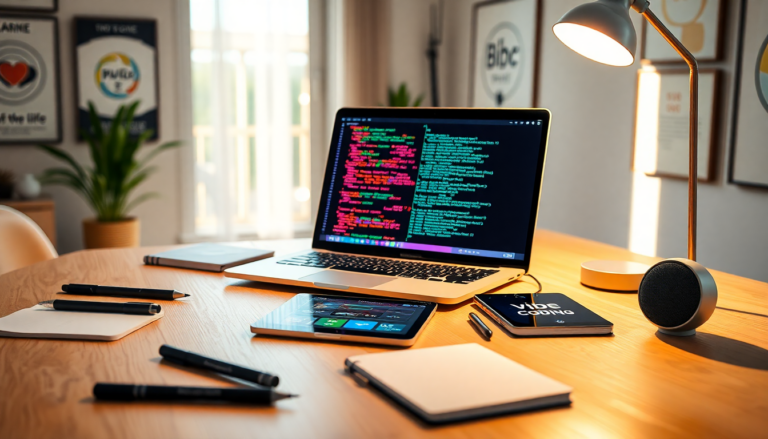Argomenti trattati
In recent years, a fascinating new method of programming has taken the tech world by storm: vibe coding. Imagine being able to create software using your instincts rather than an extensive background in programming. Sounds intriguing, right? This innovative approach taps into the power of AI, allowing users to write code more intuitively, making app development accessible and far less intimidating for beginners. With the help of AI chatbots, aspiring developers can bring their ideas to life without the need for formal coding boot camps or hours of tedious online tutorials.
Understanding vibe coding
So, what exactly is vibe coding? At its core, vibe coding is all about tapping into your intuition and creativity when programming. Instead of strictly adhering to traditional coding practices, vibe coders leverage AI technology to generate code based on their ideas and requirements. This means that even those with limited programming knowledge can effectively create tools, build websites, and automate repetitive tasks. The beauty of vibe coding lies in its simplicity; users can concentrate on their overarching concept while the AI takes care of the technical nitty-gritty.
This innovative method has gained significant traction in recent years, primarily because it produces tangible results. Many users have successfully launched functional applications without needing to master the fundamentals of programming. The key to this approach? Start small and gradually build your confidence. This way, you can learn through real-world experience rather than becoming overwhelmed by complex programming concepts right from the get-go.
Choosing the right tools for vibe coding
As you embark on your vibe coding journey, selecting the right tools is absolutely crucial. Many newcomers might instinctively reach for AI-assisted integrated development environments (IDEs) that claim to be perfect for beginners. However, these tools are often designed for seasoned programmers looking to boost their productivity, which can be discouraging for those just starting out. Instead, consider a more practical approach: utilizing AI chatbots for coding assistance.
Popular AI chatbots like Google’s AI Studio and Anthropic’s Claude Opus are excellent entry points for vibe coding. Google’s tool offers free access to advanced models, making it a fantastic option for those who want to experiment without breaking the bank. On the other hand, Claude Opus boasts an intuitive interface and additional functionalities that can enrich your coding experience, although it does come with a price tag.
When diving into vibe coding, it’s essential to choose a programming language that strikes the right balance between popularity and ease of use. Languages like JavaScript, Python, and HTML are great options—they’re well-supported by AI models and have a wealth of resources available online. Beginners should steer clear of languages with steep learning curves, as they can lead to frustration and hinder progress.
Starting your vibe coding projects
To set yourself up for success with vibe coding, begin with manageable projects. Think of simple applications, like a dice-rolling tool or a personal website; these can serve as excellent starting points. Not only will these projects help you grasp the basics of programming, but they’ll also give you that gratifying sense of accomplishment as you see your ideas come to life.
One challenge to be aware of in vibe coding is the risk of scope creep. It’s easy to get ambitious and aim for complex software, but focusing on smaller, achievable goals can lead to a much more satisfying development experience. As your confidence grows, you can gradually tackle more intricate projects.
Additionally, establishing good coding practices from the start is essential. Keep track of your code’s functionality, document your work, and create changelogs for any modifications. This will not only help you understand your projects better but also ensure you can easily reproduce your work on different machines when necessary.
Leveraging hardware for a richer experience
If you’re looking to expand your vibe coding experience, consider incorporating hardware projects for an exciting twist. Devices like Arduino and Raspberry Pi offer hands-on experimentation and creativity, allowing you to create unique projects. Just be prepared to invest in some hardware and learn skills that might not be covered by AI tools, like soldering.
With the help of existing tutorials and AI guidance, you can navigate hardware projects with greater ease. For instance, modifying a Raspberry Pi project to fit your specific needs can be a seamless process with AI assistance, making the learning journey both fun and rewarding.
Vibe coding is truly a game changer in how we approach programming. By embracing this intuitive method, individuals can harness AI’s power to transform their ideas into reality, regardless of their prior coding experience. As this trend continues to evolve, it opens up a world of possibilities for creativity and innovation in software development. Are you ready to dive in?

